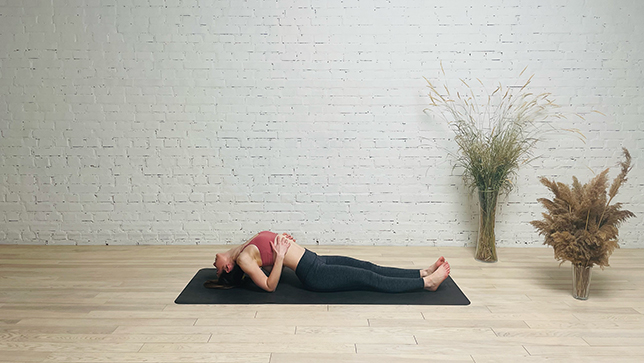Fish Pose - Matsyasana

Contents
Fish Pose or Matsyasana (maht-see-AHS-uh-nuh) in Sanskrit, comes from two words: “Matsya” meaning “fish” and “Asana” meaning “pose”/ It is a beautiful heart-opening posture that strengthens and lengthens the upper body.
It is usually used as the counter-pose to Shoulderstand ( Sarvangasana) because it neutralizes pressure on the neck and spine, but it is also a deep stretch with many benefits in its own right!
Pose Detail
- Body Position: Backbend Yoga Poses, Supine Yoga Poses
- Difficulty: Beginners, Intermediate
- By Type: Chest Opening Yoga Poses
- By Benefit: Yoga Poses For Stress Relief
Step-by-Step Instructions
Benefits and Contraindications
Stretches the chest and the front of the throat
Opens the pectorals, hip flexors, and intercostal muscles between the ribs
Stimulates organs in the throat and abdomen
Strengthens the upper back and neck musculature
Opens the accessory muscles of breathing
Releases tension in the thoracic spine and mid-back
Back and Neck Injury or Surgery
High or Low Blood Pressure
Migraine
Pregnancy
Insomnia
Modifications, Props and Tips
- To avoid straining your neck, reduce the intensity of the backbend or place a thickly folded blanket under the back of your head. Keep in mind, students should not put their full weight on their heads.
- If the backbend feels too difficult, try supporting your back on a thickly rolled blanket, foam roller, or blocks. This makes sure your throat remains soft.
- To increase the challenge in this pose, slide your hands out from underneath your buttocks and bring them into Anjali Mudra
Variations
- Fish In Lotus Pose
- Supported Fish Pose
- Fish Pose on blocks